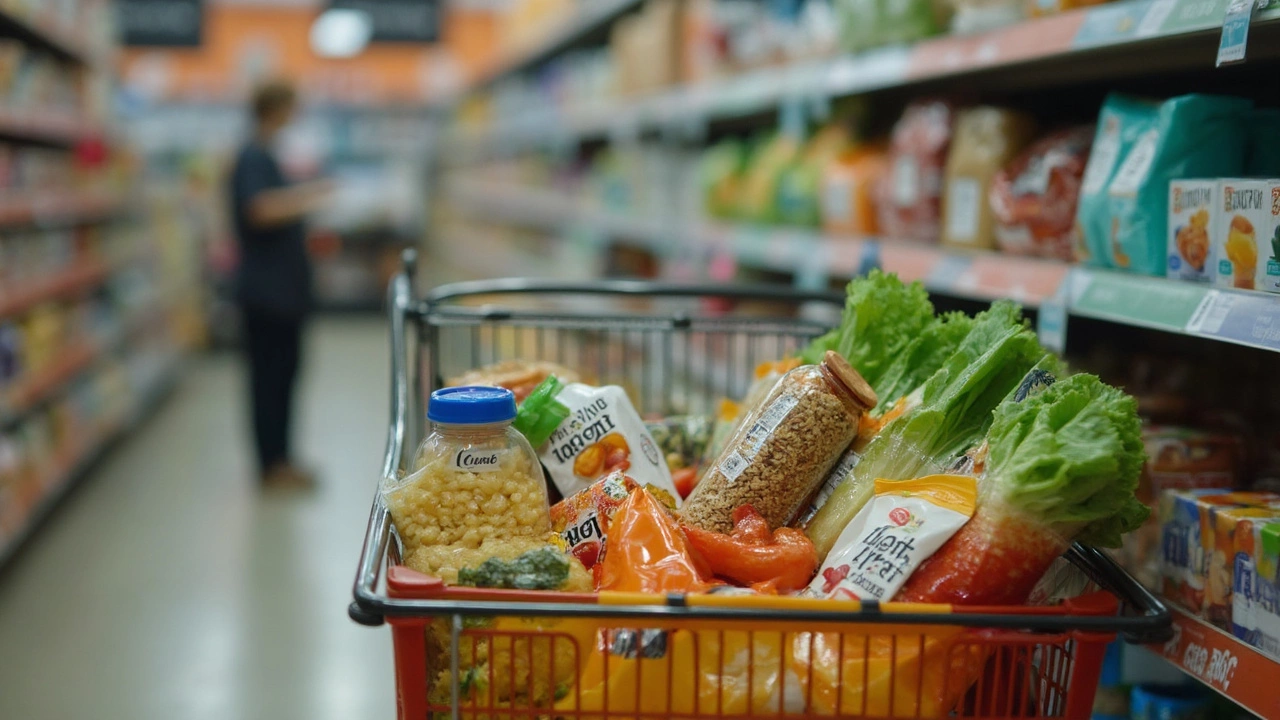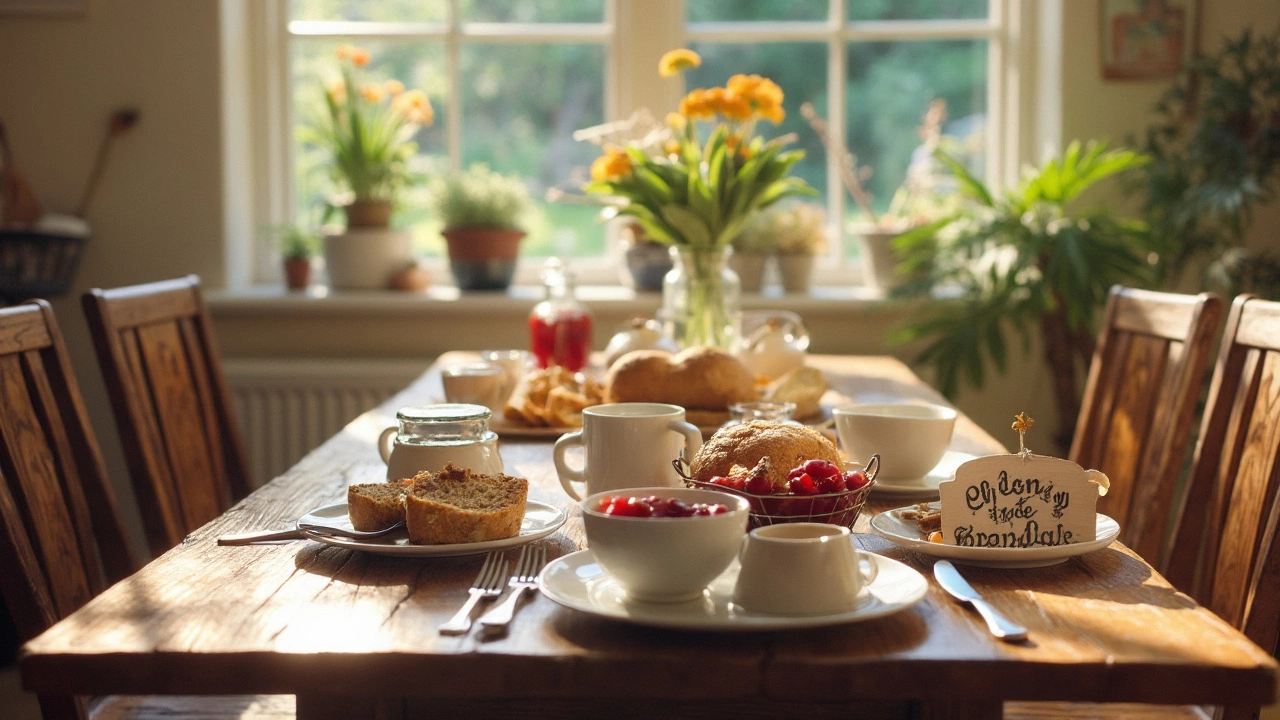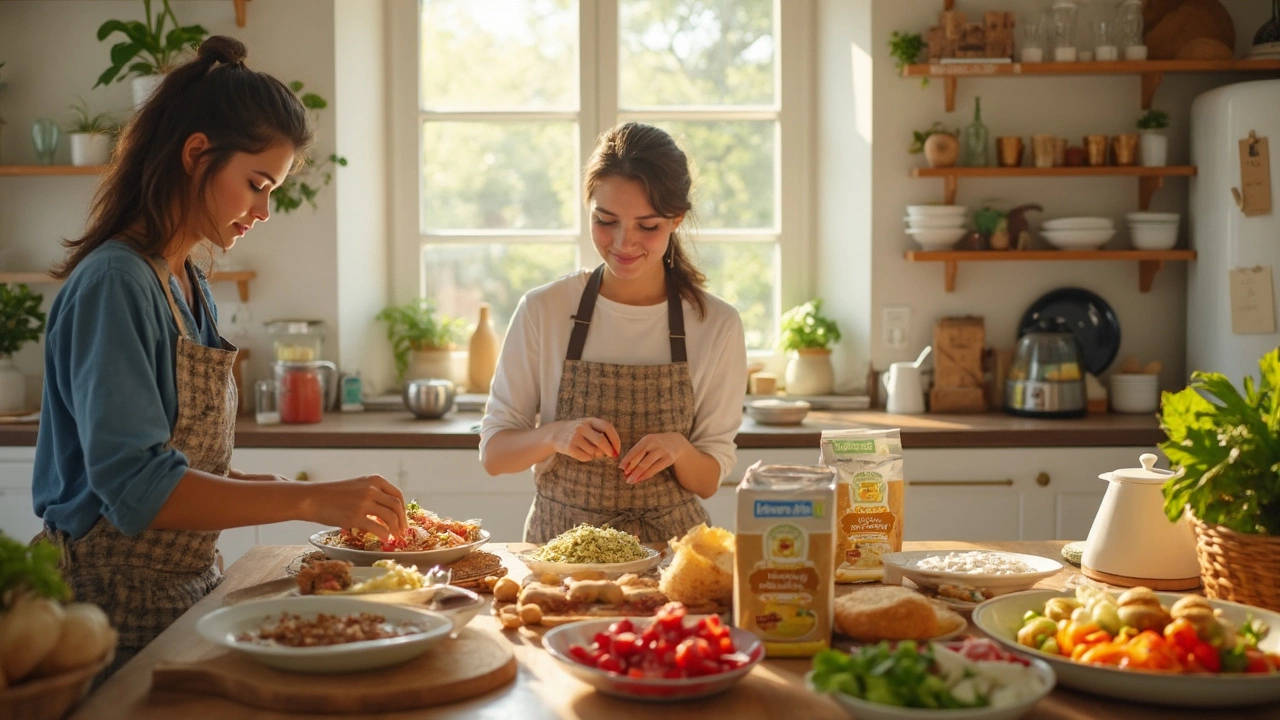There's a lot of noise about gluten these days, but for folks with celiac disease or gluten sensitivity, it's a nonstop hunt for what’s actually safe to eat. You might be surprised by how many simple, everyday foods can be totally gluten-free without any weird specialty flours or labels. No need to stress—there’s plenty to choose from once you know what to look for.
Take oats for example. They sound harmless, but unless you see that gluten-free label, cross-contamination in the factory is common. Swapping regular pasta for rice or quinoa? Now that’s a safe bet. Even your basic fruits, veggies, and proteins come through clutch for gluten-free meals—no mystery ingredients, no guessing games, just what your body needs.
Eating gluten-free doesn’t mean boring food or endless label flipping. It’s all about building a list of trusty basics and some handy tricks for mixing things up. Let’s get into eight foods that always have your back—and how to keep things safe, tasty, and stress-free on your plate.
- Why Gluten-Free Matters
- Naturally Gluten-Free Grains
- Protein Sources You Can Trust
- Surprising Fruits and Veggies
- Tips for Safe Gluten-Free Cooking
Why Gluten-Free Matters
Going gluten-free is way more than just a trendy diet. For folks with celiac disease, eating even a tiny bit of gluten damages the small intestine and can lead to a long list of problems—think stomach pain, fatigue, and even trouble absorbing nutrients. That's not just hype; according to the Celiac Disease Foundation, about 1 in 100 people have celiac, and millions more deal with non-celiac gluten sensitivity. For these people, cutting gluten is a must, not a choice.
Gluten shows up in more places than you’d expect. It hides in foods like soy sauce, some salad dressings, and even candy. That’s why nailing down a list of gluten-free foods is key. It makes daily life a lot less stressful and cuts the risk of accidental gluten exposure.
Need a quick breakdown? Check this out:
| Condition | Gluten Needed for Symptoms? | Population Estimate (US) |
|---|---|---|
| Celiac Disease | Yes | ~1% (about 3 million) |
| Non-Celiac Gluten Sensitivity | Yes | Estimated 6% (about 18 million) |
| Wheat Allergy | Yes | 0.4% |
So if you’ve ever wondered why so many food labels shout “gluten-free,” it’s not just marketing jargon. For millions, it’s about staying healthy—sometimes, it’s even about avoiding severe reactions. Mastering which foods are naturally gluten-free gives you peace of mind and keeps your meals safe and stress-free.
Naturally Gluten-Free Grains
Not all grains are off the menu when you're eating gluten-free. In fact, there are several grains that don’t have any gluten in them, and they can be the backbone of salads, bowls, and even baked goods.
Rice leads the pack because it’s in almost every kitchen and doesn’t need any specialty label. Go with white, brown, or wild rice—you won't run into gluten. Same story with quinoa. Besides being easy to cook (just rinse and pop it in water), quinoa packs more protein than most other grains.
Corn is another winner. It’s not just for chips and tortillas—cornmeal works for baking and polenta makes a nice change from regular pasta or rice. Sorghum and millet don’t get hyped much, but they’re both safe bets. People use them in porridge, side dishes, or to add texture to breads that don’t need gluten to hold together.
- Gluten-free foods like buckwheat—confusing name, but trust me, there’s zero wheat here—are great for pancakes or soba noodles (double check the packaging though; some brands mix in wheat flour).
- Teff is an East African grain mostly known for injera, the classic Ethiopian flatbread. Super tiny but loaded with fiber, it’ll blend into smoothies or porridge if you want to try something different.
Most of these grains you can find in regular grocery stores, and you don’t have to break the bank for them. The biggest tip? Don’t grab these grains from bulk bins if you have celiac or serious sensitivities. Tiny bits of wheat or barley can sneak in from shared scoops, which is the last thing you want. Go for pre-packaged and labeled gluten-free whenever you can, especially with oats and buckwheat, since contamination is surprisingly common there.

Protein Sources You Can Trust
Meat, fish, eggs, and dairy are usually safe bets for anyone going gluten-free. Fresh cuts of beef, chicken, pork, and turkey don’t naturally contain gluten. The catch? Watch out for marinades, breadings, and processed meats like sausages—those can sneak in wheat or other gluten-filled ingredients.
Fish and shellfish straight from the market are a go, too. Canned tuna or salmon are solid choices, but avoid the ones packed with flavorings, sauces, or breadcrumbs.
Plant-based protein fans aren’t left out. Beans, lentils, chickpeas, tofu, tempeh, and plain nuts and seeds are all naturally gluten-free. Just peek at labels on anything roasted, seasoned, or processed because sometimes gluten hides where you least expect it.
Here’s a quick list of gluten-free foods for reliable protein sources:
- Fresh (unseasoned) poultry, beef, pork, and fish
- Eggs
- Milk, plain yogurt, and cheese (watch for additives)
- Dry or canned beans (unseasoned)
- Lentils and chickpeas
- Plain tofu and tempeh
- Unsalted, unflavored nuts and seeds
Heads up: A 2024 Celiac Disease Foundation survey found that around 32% of new gluten exposures came from deli meats and processed foods labeled as "gluten-free" but actually cross-contaminated during packaging. When in doubt, grill or bake at home from scratch.
| Protein Source | Risk of Gluten Contamination |
|---|---|
| Fresh Meat & Fish | Low |
| Eggs | Very Low |
| Plain Dairy | Low |
| Processed Meats | High |
| Beans & Lentils (Plain) | Very Low |
| Tofu & Tempeh (Plain) | Low |
| Flavored or Roasted Nuts | Moderate |
Bottom line: For protein, the simpler the better. Stick to whole, unseasoned foods, check labels, and prep at home when you can. You’ll eat well and dodge gluten without breaking a sweat.
Surprising Fruits and Veggies
Think you need to double-check every fruit or veggie for gluten? Here’s the bright spot: fresh fruits and vegetables are always gluten-free in their natural form. Apples, oranges, carrots, even potatoes—zero gluten risk unless someone adds a suspicious coating or sauce. Where it gets tricky are pre-cut fruits or salad kits. Sometimes, they sneak in seasonings or dressings that contain gluten as a thickener or hidden ingredient.
When you’re shopping the produce section, pick whole, unprocessed items whenever possible. If you’re reaching for canned or frozen options, always check the label. Some brands add wheat-based flavoring. For example, a 2024 consumer report found about 12% of frozen mixed veggie brands in the U.S. use wheat starch in seasoning or as an anti-caking agent. That’s worth a second glance.
If you want to play it totally safe, here are some fruits and veggies that pack extra nutrition and are almost never processed with gluten:
- Sweet potatoes – easy to roast, mash, or turn into fries
- Avocados – perfect for guac or toast toppings
- Broccoli – great steamed, roasted, or raw in salads
- Bananas – grab-and-go, no prep needed
- Spinach – toss fresh in salads or sauté with olive oil
- Bell peppers – crunchy snacks or stir-fry champs
Curious how different veggies stack up on fiber, vitamins, and calories? Here’s a quick look:
| Veggie | Fiber (g/100g) | Vitamin C (mg/100g) | Calories |
|---|---|---|---|
| Broccoli | 2.6 | 89.2 | 34 |
| Sweet Potato | 3.0 | 2.4 | 86 |
| Bell Pepper (Red) | 1.5 | 127.7 | 31 |
The bottom line? Fruits and veggies are your safest go-to for gluten-free foods. If you ever wonder about something new—like pickled veggies, fruit leather, or dried fruit—just flip over to the ingredients for a quick check. Fresh is nearly always worry-free.

Tips for Safe Gluten-Free Cooking
The two biggest issues in gluten-free home cooking are cross-contamination and hidden ingredients. Even a crumb of regular bread can cause problems for someone with celiac. So, keeping your kitchen safe is more about habits than expensive gadgets.
- Designate separate utensils. Use a different toaster, cutting board, and even wooden spoons for gluten-free food. If you bake with regular flour, keep a whisk and bowl just for gluten-free stuff. Color-coding works wonders.
- Double-check packaged items. Sauces, marinades, or spice blends sometimes sneak in wheat starch or barley malt. If the label doesn’t say "gluten-free," look for ingredients you trust or check the company’s website.
- Wash surfaces and hands before starting. Be the person who actually wipes down the counter after making a sandwich. It sounds simple, but studies show home kitchens are one of the most common places for accidental gluten exposure.
- Store gluten-free foods on the top shelf. Gravity isn’t on your side—bread crumbs drop down, not up. Pop gluten-free flour, snacks, and grains away from anything that might shed crumbs.
When you’re cooking for both gluten-eating and gluten-free people, finish the gluten-free meal first, use clean pans, and serve it up before handling anything with gluten. It may seem like a pain, but you’ll only need a few extra steps once you get the hang of it.
If you’re a stats person, here’s a quick look at common trouble spots in home kitchens, based on surveys of people with celiac disease:
| Kitchen Area | Risky Item | Reported Accidents (%) |
|---|---|---|
| Toaster | Shared crumbs | 35 |
| Cutting Boards | Hidden residue | 29 |
| Pasta Drainers | Used for both types | 22 |
| Butter Dishes | Double-dipping knives | 30 |
| Knives/Utensils | Not washed thoroughly | 20 |
One last thing: eating out or eating with friends gets tricky fast. When in doubt, bring along your own snack, and don’t feel awkward about asking questions. Your health is on the line, not just your taste buds.
Keeping your kitchen set up for safe gluten-free foods makes life way easier. Once you’ve got a good routine, you’ll spend more time enjoying what you cook and way less time worrying.

